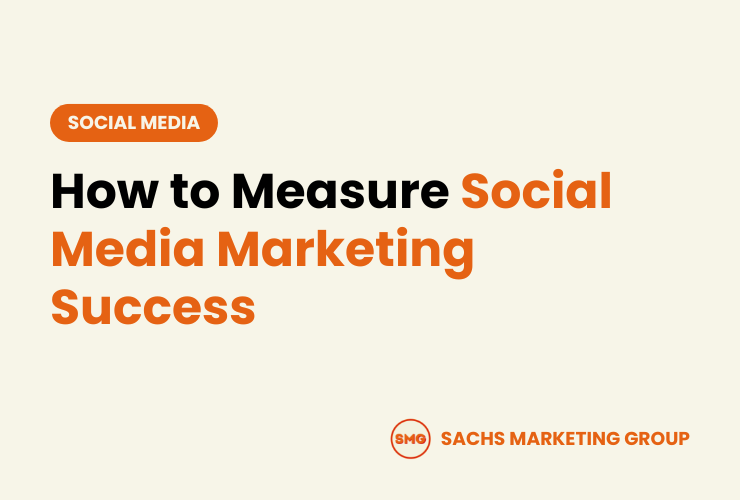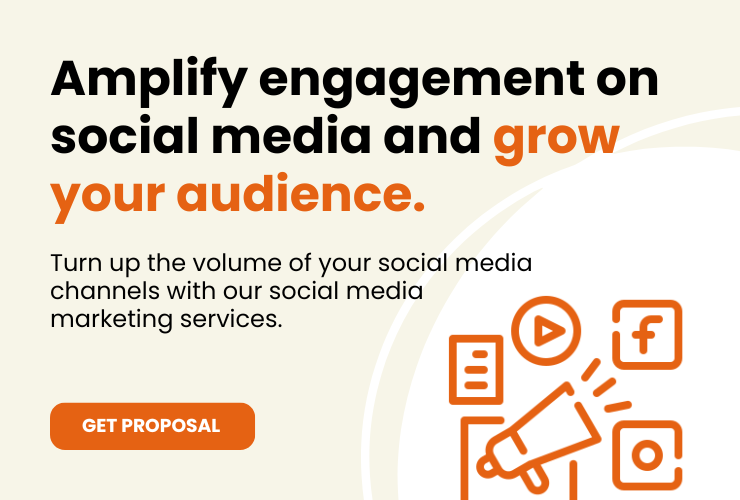Understanding how to measure social media marketing success involves analyzing various metrics that reflect audience engagement, brand reach, and the effectiveness of marketing strategies. Key indicators include engagement rates, follower growth, website traffic from social media, and return on investment (ROI).
Not sure how to measure social media marketing success for your business? You’re not alone.
Social media marketing is a rapidly changing area of digital marketing. Measuring success in the ever-evolving social media landscape can be like trying to hit a moving target.
For most business owners, this can quickly become discouraging due to the competitive nature of social media. Fortunately, there are a few things that can help you measure your activity, progress, and success.
In this article, we’ve gathered a few tips based on our experience to help you get started. With these tips, you will discover how to measure social media marketing success.
Overview
How to Measure Social Media Marketing Success
The challenge in measuring social media marketing success lies in the vast array of metrics available.
It’s easy to get lost in the sea of data. What matters is understanding which metrics align with your business goals and interpreting them correctly. This is crucial for adjusting strategies to achieve better results.
Here’s how to measure social media marketing success effectively for your business.
Start by Setting Goals
Setting clear and achievable goals is the foundation of any successful social media marketing strategy.
These goals should align with your broader marketing objectives and be specific, measurable, attainable, relevant, and time-bound (SMART).
Common goals include increasing brand awareness, driving website traffic, generating leads, or boosting sales.
If your goal is to increase brand awareness, you might focus on metrics like follower count, post reach, and the number of mentions your brand receives. On the other hand, if your goal is to drive sales, you’ll want to track metrics like click-through rates, conversion rates, and ROI from your social media ads.
For example, we set a goal to double the number of Instagram comments and likes for an addiction treatment center and deployed a rehab center social media marketing strategy that resulted in a 700% increase in comments and a 255% increase in likes in one quarter.
Set Up Social Listening Tools
Social listening tools are crucial for understanding how your audience and the wider public perceive your brand.
These tools scan social media platforms for mentions of your brand, relevant keywords, and industry trends. They provide insights into customer sentiment, emerging trends, and the effectiveness of your content.
Key benefits of social listening include the ability to monitor brand health, identify opportunities for engagement, track competitor activity, and stay ahead of industry trends. These insights help you make informed decisions about your social media strategy and overall marketing efforts.
For instance, a tech company might use social listening tools to track discussions around a new product launch. They discover that while there’s excitement about the product’s features, there’s also concern about its price. Armed with this information, the company can adjust its marketing messages to better address these concerns and highlight the product’s value for money.
Track Engagement
Engagement metrics such as likes, comments, shares, and mentions give you a direct insight into how your audience interacts with your content. High engagement rates usually indicate that your content resonates well with your audience.
To track engagement effectively, focus on the quality of interactions rather than just the quantity. For instance, a post that sparks a conversation in the comments section is more valuable than a post with many likes but no comments.
Consider a clothing brand that launches a new collection. They post a series of images on Instagram showcasing their new line. One particular post, featuring a behind-the-scenes look at their photoshoot, receives a high number of likes, shares, and several comments praising the authenticity of the content.
This indicates a strong connection with their audience and can inform future content strategies.
Monitor Amplification Rate
The amplification rate is a measure of how often your followers share your content, extending its reach beyond your immediate audience. A high amplification rate is a strong indicator of content relevance and audience engagement.
To improve your amplification rate, create shareable content such as infographics, compelling quotes, or interactive posts. Encourage sharing by including calls to action in your posts.
For example, a non-profit organization aiming to raise awareness about environmental issues posts an infographic on Facebook illustrating the impact of plastic pollution.
They encourage their followers to share the post to spread awareness. The post gets shared widely, significantly increasing the organization’s reach and amplifying its message.
Track Your Impressions
Tracking impressions is about understanding how often your content appears in front of social media users. This metric is crucial for gauging brand visibility and reach.
Unlike reach, which counts unique views, impressions can count multiple views by the same user. High impressions indicate that your content is widely circulated, but it’s important to balance this with engagement metrics for a complete picture.
For businesses, tracking impressions helps in understanding the potential size of their audience and how often their content is displayed.
For example, a small business running Facebook advertising might notice that certain ads have high impressions but low engagement. This could indicate that while the ads are being seen by many, they might not be resonating with the audience or reaching the right demographic.
Evaluate Follower Growth
Evaluating follower growth involves more than just counting how many new followers you gain.
It’s about understanding who your followers are, how they interact with your content, and whether they fit your target audience. Rapid growth with low engagement can be a sign of low-quality followers or misalignment with audience interests.
For example, a fitness brand might launch an Instagram campaign to attract new followers. Throughout the campaign, they noticed a significant increase in followers.
However, upon closer inspection, they find that many new followers are not engaging with the content or are outside their target demographic. This insight helps them to refine their targeting strategy for future campaigns.
Measure Click-through Rate (CTR)
Click-through Rate (CTR) is a vital metric in understanding how effective your content is in driving traffic to your website or landing pages.
It measures how many people clicked on a link in your post or ad, relative to the number of impressions or views. A high CTR indicates that your content is not only reaching the right audience but also compelling them to take action.
For instance, an online retailer promoting a seasonal sale on their social media channels observes that certain posts have a much higher CTR than others. Analyzing these posts, they find that the ones with clear calls-to-action and attractive product images perform the best. This insight guides their future content creation to maximize CTR.
Monitor Cost-per-click (CPC)
Cost-per-click (CPC) is a key metric for evaluating the cost-effectiveness of paid social media campaigns. It shows how much you pay, on average, for each click on your ads. Monitoring CPC helps in budget allocation and optimizing your ad spend for the best results.
An example of CPC analysis could be a software company running LinkedIn ads. After some time, they notice that their CPC is higher than the industry average.
By experimenting with different ad formats and targeting options, they manage to lower their CPC while maintaining ad performance, thus improving the efficiency of their ad spend.
Assess Conversion Rates
Conversion rates are perhaps the most direct tie between social media efforts and business outcomes.
This metric measures how many of the clicks or interactions on your social media content lead to a desired action, such as a purchase, sign-up, or download. A high conversion rate indicates effective social media marketing that drives real business results.
For example, a travel agency uses Instagram to promote vacation packages. They track how many users click through their posts and subsequently book a trip.
Over time, they notice certain types of posts (like user-generated content featuring past travelers) have higher conversion rates. This insight allows them to adjust their content strategy to include more of such content, thereby boosting conversions.
Evaluate Your Competitors Activity
Evaluating your competitors’ activity on social media provides invaluable insights into market trends, successful strategies, and potential areas for differentiation. By analyzing what your competitors are doing, you can identify what works well in your industry and find opportunities to stand out.
When evaluating competitors, look at their engagement rates, content strategy, follower growth, and how they interact with their audience.
Also, take note of any campaigns or tactics that seem particularly effective. For instance, a local café might observe that a competitor’s posts featuring customer stories and behind-the-scenes content receive high engagement.
This could inspire them to adopt a similar approach, perhaps with their unique twist, to connect more authentically with their audience.
Analyze the Analytics & Calculate Your ROI
Analyzing analytics involves diving deep into the data provided by social media platforms to understand the performance of your content and campaigns.
This analysis should focus on metrics that align with your goals, such as engagement rates, reach, impressions, and conversion rates.
Calculating your Return on Investment (ROI) is crucial for understanding the effectiveness of your social media marketing in financial terms. To calculate ROI, compare the revenue generated through social media efforts against the costs involved, including ad spend, content creation, and management tools.
For example, an e-commerce brand may calculate that their social media campaigns generated $20,000 in sales with a spend of $5,000, indicating a positive ROI.
Hire a Social Media Marketing Agency
Hiring a social media marketing agency can provide expertise, resources, and fresh perspectives to elevate your social media presence.
An agency can help in strategizing, content creation, campaign management, analytics, and more. They bring experience from working with various clients and stay updated with the latest trends and algorithm changes.
When choosing an agency, consider their experience in your industry, case studies of past successes, and their approach to social media marketing. Check out our guides on how to choose an agency and questions to ask a digital marketing agency.
Need Help Measuring Your Social Media Marketing Success?
Measuring social media marketing activity, progress, and success requires a lot of time and energy. Most business owners overlook social media marketing channels because of this, which is a missed opportunity to reach more customers.
If you’re interested in reaching more customers through social media marketing, Sachs Marketing Group is here to help.
As a full-service digital marketing agency, our dedicated social media marketing team provides the expertise you need to craft targeted, effective social media strategies that deliver results.
From engaging content to comprehensive analytics, we’ve got you covered. Contact us today to discuss your business and discover how we can help.
Conclusion
Measuring social media marketing success is an ongoing process that requires consistent effort and adaptation.
By understanding and implementing these strategies, you can gain a clearer picture of your social media performance and how it contributes to your overall business goals. Remember, the key to success is not just in the numbers, but in understanding what they mean for your business.
Now that you know how to measure social media marketing success, you’re ready to get started! Let us know if you have any questions or would like to learn how we can help.
Contact us today to get the conversation started!












